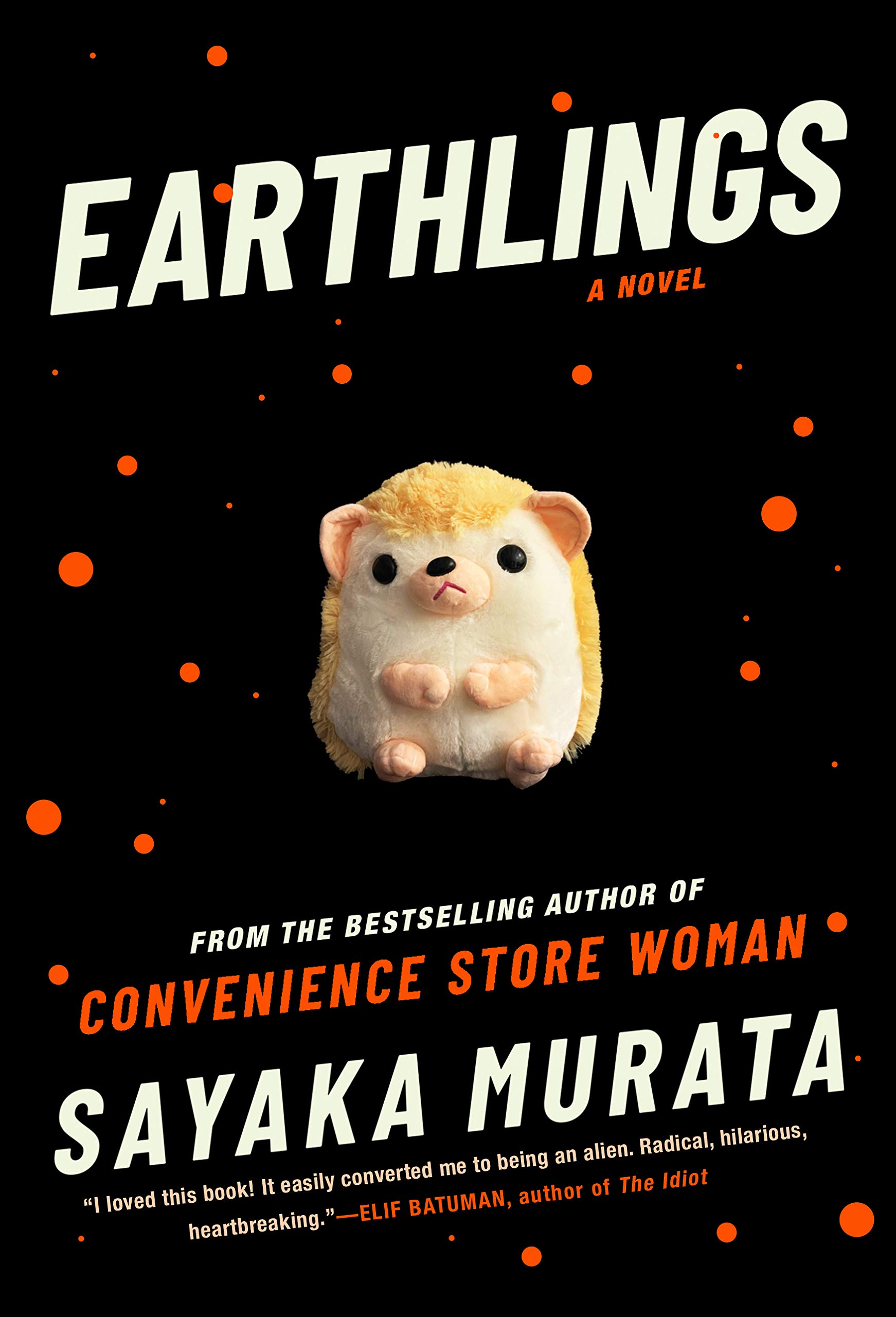What is normal? Are you normal? Am I normal?
“Normality was contagious, and exposure to the infection was necessary to keep up with it,” explains Natsuki in Sayaka Murata’s Earthlings.

If we accept that “normal” describes what is typical, and thus, what we may expect in any circumstance, then the novels of Murata are themselves not normal.
And the central characters in both Earthlings and Convenience Store Woman are certainly not normal either.

Having focused for the last couple of years on fiction in translation (see links below)—prompted in part by my scholarly and personal interest in Haruki Murakami—I think part of the appeal of fiction from other cultures, crafter originally in languages other than my native English, is that the works confront and challenge my perceptions of normal, even though my critical ideology always calls on me to question, to step back, and to reconsider the assumptions of being human.
However, Murata’s work has shaken me to the core, although in a different way than my recent journey through three novels by Ryu Murakami (below); both authors leave me confused about my responses to their graphic violence and matter-of-fact explorations of the decidedly taboo (child sexual assault, incest, and cannibalism, for example, in Murata).
But while Ryu Murakami crafts tension around both horrific violence by serial murderers and the ever-present threat of violence (readers can likely never again ignore the possibility of severed feet), Murata’s tensions are existential, and while far more dramatic than day-to-day human anxiety, any reader who lives with the existential dread of simply being alive must interrogate their empathy for Keiko (Convenience Store Woman) and Natsuki.
I read Earthlings first, mesmerized by the first third of the novel focusing on Natsuki at 11 years old and in the early stages of puberty. However, this opening is no coming-of-age narrative seeking to reach some sort of universal appeal.
Yes, some of the first two chapters is somewhat quirky explorations of what almost everyone understands about being an adolescent—especially Natsuki’s feeling alienated from her family, particularly her antagonistic mother—but Natsuki being the victim of sexual assault (far too common for young women throughout the world) turns even more disturbing because her confession of the abuse is callously dismissed by her mother and ultimately because Natsuki at 11 enacts a surrealistic revenge that leaves the reader, again, conflicted.
The rest of the novel is Natsuki as an adult, in her 30s, and here we see many of the same powerful motifs found in Convenience Store Woman, where Keiko is also a woman in her 30s.
Murata offers readers characters explicitly aware that they are not normal, but who are along a spectrum of navigating their world-views against either the urge to become normal or finding a way to exist in the so-called normal world as an alien (with sufficient ambiguity about whether that is literal, delusional, or metaphorical).
From casual interest in incest and gleeful cannibalism to choosing a single life as a career part-time convenience store worker, the plot elements of Murata’s novels shatter expectations about tone as well as anyone’s confidence in their own sense of normality.
It isn’t enough to say that Murata seems to show that there really is no such thing as “normal”—except for the power of normalization to seem real.
Murata pushes even further, toward the implication of normal as entirely arbitrary; “normal,” if we dare to be critical, becomes most harmful in human experiences when it becomes “right.”
Normal people marry and have children. Normal people seek out careers and center the focus of their lives on those careers.
And since these are the right things to do, this is how anyone can be fully human.
The harm, of course, is that those who choose not to marry, have children, and center their lives on their careers are choosing the wrong path—and are in effect not fully human.
This brings me to the ultimate overwhelming weight of Murata’s novels—the burden of normal on children and women as well as the role of normal in the sexual and physical violence pervading the lives of children and women.
Yes, there are cartoonishly surreal moments in Murata that prod a smile, but everything in her worlds is tinted by the inevitability of the disease of normality and the futility of a single human’s desire simply to be herself, her true and full self.
See Also
The Diving Pool: Three Novellas, Ogawa, Yoko
The Housekeeper and the Professor, Yoko Ogawa
Revenge: Eleven Dark Tales, Ogawa, Yoko
Hotel Iris: A Novel, Yoko Ogawa
The Memory Police: A Novel, Ogawa, Yoko
Breasts and Eggs, Kawakami, Mieko
Piercing, Murakami, Ryu
Audition, Murakami, Ryu
In the Miso Soup, Murakami, Ryu
Convenience Store Woman, Sayaka Murata
Earthlings, Sayaka Murata
A Man, Hirano, Keiichiro
The Naked Eye, Tawada, Yoko




